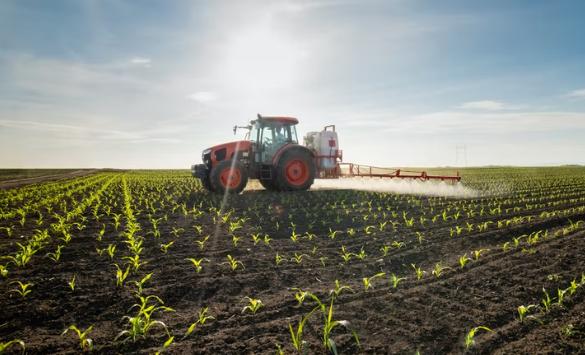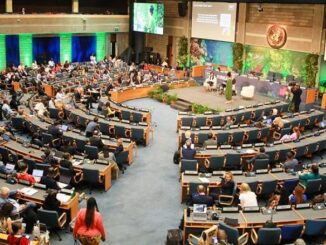
CARDIFF, Wales, UK, May 16, 2022 (ENS) – Farmlands across Europe are becoming the largest global reservoir of microplastics due to the high concentrations found in fertilizers derived from sewage sludge, new research from Cardiff University demonstrates.
Instead of being removed from wastewater at treatment plants, microplastics originally shed into the environment from vehicle tires, synthetic textiles, paints, and personal care products are showing up again on farmlands, in ocean depths and on the tops of the world’s highest mountains.
“Our research questions whether microplastics are in fact being removed at wastewater treatment plants at all, or are effectively being shifted around the environment,” explained lead author of the study James Lofty, a research student with Cardiff University’s School of Engineering.

“A clear lack of strategy from water companies to manage microplastics in sewage sludge means these contaminants are transported back into the soil and will eventually return to the aquatic environment,” Lofty said.
This return of microplastics to the soils and waters is contrary to the European Union’s goals for the management of microplastics. On May 12, 2021, the European Commission adopted the EU Action Plan, “Towards a Zero Pollution for Air, Water and Soil,” a key deliverable of the European Green Deal. It sets the goal of reducing the microplastics released into the environment by 30 percent by 2030.
But scientists from Cardiff University, working with University of Manchester researchers, estimated that between 31,000 and 42,000 tonnes of microplastics – up to 710 trillion microplastic particles – are applied to European soils every year, mirroring the concentration of microplastics found in ocean surface waters.
In their study, published in the journal “Environmental Pollution,” the team estimate that microplastics removed from raw sewage at wastewater treatment plants go on to make up roughly one percent of the weight of sewage sludge, which is commonly used as a fertilizer on farms across Europe.
The UK was shown to potentially have the highest amount of microplastic contamination in its soils, with 500 to 1,000 microplastic particles per square meter of agricultural land applied per year, followed by Spain, Portugal and Germany.
Sewage sludge is commonly used on agricultural land as a sustainable and renewable source of fertilizer throughout European countries, in part due to European Union directives that promote the diverting of sewage sludge away from landfill and incineration and towards energy production and agriculture.
Microplastics spread onto farmland will eventually be transported back into the natural watercourse by means of surface water run-off or infiltration to groundwater.
Less than five millimeters in size, microplastics pose a threat to wildlife as they are easily ingested and can carry contaminants, toxic chemicals and hazardous pathogens, potentially impacting the whole food chain.

In their study, the team took samples from the Nash Wastewater Treatment Plant in Newport, South Wales, which treats the combined sewage from a population of 300,000.
Their analysis revealed that the treatment plant was 100 percent effective in removing large microplastic particles one to five mm in size, from incoming sewage that would otherwise be released into the aquatic environment.
Each gram of sewage sludge was shown to contain up to 24 microplastic particles, roughly one percent of its weight.
This data was then used to assess the impact across Europe using figures from the European Commission and Eurostat on the use and application of sewage sludge as a fertilizer across the continent.
As the researchers did not analyze microplastics that were less than one mm in size, the overall concentrations are likely to be a lot higher than their estimates.
“Our results highlight the magnitude of the problem across European soils and suggest that the practice of spreading sludge on agricultural land could potentially make them one of the largest global reservoirs of microplastic pollution,” Lofty warned.
“At present, there is currently no European legislation that limits or controls microplastic input into recycled sewage sludge based on the loads and toxicity of microplastic exposure,” he said.
“Efforts should be made to increase standardized monitoring of microplastic concentrations in sewage sludge and agricultural soils, which would provide a more accurate picture of contamination levels in soils across Europe,” Lofty advised.
To read the research study, “Microplastics removal from a primary settler tank in a wastewater treatment plant and estimations of contamination onto European agricultural land via sewage sludge recycling,” click here.
Featured image: Tractor at work fertilizing fields in Devon, England, September 18, 2017 (Photo by Alison Day)
© 2022, Environment News Service. All rights reserved. Content may be quoted only with proper attribution and a direct link to the original article. Full reproduction is prohibited.



